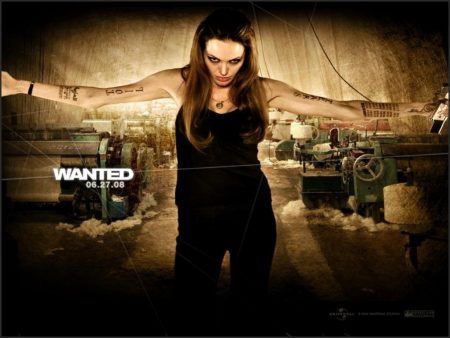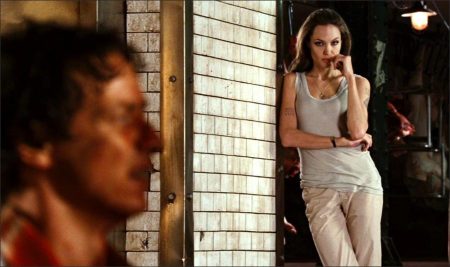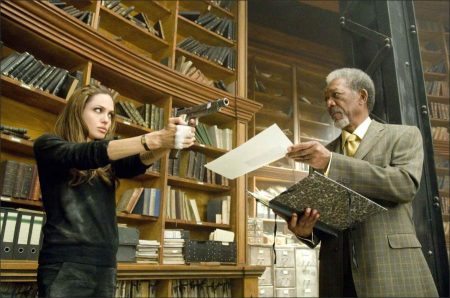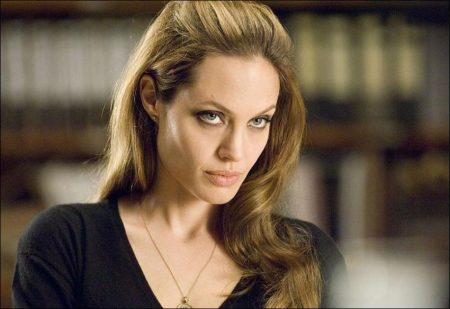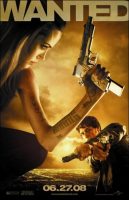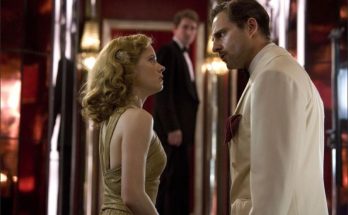From Comic Book to Screen
Wanted Movie Trailer. “Cool as hell,” “unique,” “experimental,” “ironic” and “creative genius” are just some of the words used to describe Russian-born director Timur Bekmambetov, who hails from the city of Guryev in Kazakhstan. Bekmambetov’s vision has landed him his first English-language film, in collaboration with astute producers and an award-winning cast and crew, all under the aegis of a large American movie studio.
Just how did that happen? Perhaps a little background… The year 2004 saw the release of Bekmambetov’s film Nochnoy Dozor (or Night Watch). The film was budgeted at $1.8 million but grossed more than $16 million in Russia alone, making it more of a hit in his own country than The Lord of the Rings: The Fellowship of the Ring. The sequel to Night Watch (the first installment of the trilogy), Day Watch, was released in Russia in early 2006. Again, the film was considered low budget (costing just $4.2 million) and became a juggernaut-grossing nearly $40 million in Bekmambetov’s home country.
About the same time, executives at Marc Platt Productions had come across Mark Millar and J.G. Jones’ first issue of their comic book series “Wanted” and immediately thought the dark and inventive tale had huge cinematic potential…but the subject matter (a covert band of super villains who has split up the world into factions) needed an offbeat spin. They sought an exciting, creative new filmmaker who thought beyond limits and, after seeing Night Watch, they knew they’d found their man. If Bekmambetov could create such a visually stunning movie on such a low budget, producers reasoned, there would be no holding back the auteur’s energetic point of view and dark sensibility when given a large-scale budget and the vast resources available to a studio-made film.
Producer Marc Platt comments, “The cinematic experience of Timur’s work and the visual language employed by him are so unique, eye-popping and extraordinary, I knew his was a voice that had to be heard. I had never experienced visual images in that way. I thought by matching him and his ability to create a completely new world with this material, we could create something exciting, experimental and yet accessible for audiences all over the world.”
Bekmambetov’s producing partner, Jim Lemley, adds, “We spent two years getting from the first draft of the script to the shoot. It was important for us to push through a comfort level of what had been seen on film before and come up with ideas-no matter how outlandish they seemed on paper-that could visually blow the audience away.”
Regarding his trust in the director’s unique vision, Lemley concludes, “You could put three people in a room, give them the same camera and ask them to take the same shot. Timur’s image would be amazing.”
Of his thoughts on visual imagery, Bekmambetov remarks, “It is like 100 ideas are going on inside my brain, all fighting to come out. What happens is this makes a new style, maybe something that no one has seen before. I want to put the audience in the action-in the middle-so that they go on a journey with the character, not just sit and watch.”
The director’s mantra seems to be a fantastic realism on each of his projects. He believes there should be a realistic base to every action, every emotion, no matter how outlandish the circumstances. As a director, his attention to detail gives him something on which to focus-a solid way into each scene.
“Making my first film in English is not so different from my other movies,” claims the director. “I just try to communicate with the audience, fall in love with them in a way and make a good movie for them-be a good storyteller for them.”
The director’s approach to filmmaking and skewed tone hardly changed with his move to an American-studio and English-language production. Platt adds, “Bekmambetov brings a very strong sardonic sense to his work, which was very present in all of his previous films. Not in a silly, broad way, but in a dark, comedic way that constantly undercuts the earnestness of the proceedings. It is the irony that he brings to the project, both narratively and visually, that gives Wanted a very unique tone.”
That black humor is also present in the project’s source material, Millar and Jones’ graphic novel of the same name (originally published as a six-issue limited series). More than just acquiring the property that was one of the best-selling independent comic books of the last decade, the filmmakers were also keen on obtaining the blessing of the original creators.
At the time Millar had sold the movie rights to Universal, he and Jones were only up to the second issue. So, while Millar was finishing the series, the studio had almost finished the first draft of the screenplay.
With two parties writing independently, both projects took on separate lives. Millar comments, “I was relaxed about this, because the comic book and movie were two distinct entities. Regardless of what they changed, my book would be untouched. But I was pleased to see them going back again and again to the source material, and once they had my entire book in a complete form, subsequent drafts by other screenwriters incorporated pretty much all of the main material. They dropped the super villain backstory I had in the original book, but everything else works very well.”
Before advancing on separate paths, both the graphic novel and graphically violent screen version of Wanted started in the same place (the first one-third of the screenplay mirrors the first two chapters of the series…but then diverges). The comic writer feels that although the stories take place in very different places, the tone, the characters and basic narrative remain the same in both versions.
Millar observes, “The first 40 minutes of the film are pretty much identical, scene for scene, to the book, and I was pleased with that. This wasn’t the case with the first draft, but once Timur was attached, he really just embraced many of the darker aspects of the material. I thought they might drop some of the slightly more edgy material, but captions, voiceovers, dialogue and entire sequences were lifted straight from the book. I was so pleased to see that. One of my favorite scenes that was transplanted was the opening scene where, suddenly, this guy sees a dot on his head, takes out his guns, jumps out the window and starts chasing after these assassins. It’s beautiful that the way it’s actually shot is almost panel for panel like the comic book.”
Not only was the writer impressed by the filmmakers’ attention to detail, but by how the screenwriters and Bekmambetov expanded upon key scenes from the first two chapters in his series. Says Millar, “There were a few scenes where I only had a couple of panels to play with, because you don’t really have a lot of room in a comic book. Timur and the guys fleshed them out and made them into cool scenes with gigantic chase sequences.
As a nod to die-hard “Wanted” comic aficionados, Millar acknowledges, “There’s all these little `Easter eggs’ that fans of the book will be able to pick up on. The second chapter, for example, is called `F–k you,’ and Timur had a little laugh with this by incorporating the words on a computer keyboard flying toward us when the main scene was brought to life in the movie.”
Producer Platt adds, “Mark really embraced Timur. The comic is fantastic and gutsy and it has a real edge to it, and that’s what we wanted to build into our script. We didn’t want to make something run-of-the-mill…We wanted to roll the dice and try for something special. Where the script follows the comic book, we didn’t change a word of it. But, of course, the movie is its own thing. Millar backs it, and that’s important to us as filmmakers.”
Not only was it important for the director to honor the inventiveness of the source material, he intended to respect Wesley’s search for reality in a world of deceit. “This is really a story about truth,” sums Bekmambetov. “Wesley is trying to escape from a world where people lie and find people who tell the truth. Along the way, he finds you can’t do anything about fate, but you can destiny. You choose and you steer your destiny. Something everybody is trying to do.”
Welcome to Assassin Mode.
This is a trait shared by all in the Fraternity. It enables them to see things more clearly than a normal person. With the world at a snail’s pace, the assassin has more time in which to think, decide and act. While in the mode, the fighter can discern what is happening at any given moment with a jewel cutter’s precision-thus making life-altering decisions with ease and clarity.
The Assassin Mode was a complex notion to try to achieve visually, and Bekmambetov wanted it to work within the Wanted bounds he had established: that every effect needed to have an emotional basis. Ergo, if Wesley was to be in Assassin Mode, the director wanted the audience to be in Assassin Mode as well, not merely looking at it as an observer. And although all Fraternity members have the ability to go into the mode, the audience would only see it from Wes’ point of view.
McAvoy explains, “Within the mythology of the film, the senses of the assassins in the Fraternity become heightened as their hearts pump in excess of 400 beats-per-minute. They’re not supermen and they don’t have superpowers, but they see things faster and clearer-but making a decision that quickly, compared to everyone else around them, might be seen as something superhuman.”
Bekmambetov likes to push his boundaries-so how about defying the laws of physics? Why not? So he and DP Mitchell Amundsen fashioned a shot specific to the Fraternity that enabled them to bend bullets (again, to be augmented with visual effects). McAvoy explains the concept behind the technique: “The Fraternity members can bend bullets because they have non-rifled chambers and barrels in their guns-non-rifled means there’s no interior grooving which causes the bullet to spiral as its fired. So, in our theory, that means that if I swing my wrist like I’m taking a tennis shot, the bullet arrives at your target but in a curved trajectory-not a straight shot. You can bend around objects. Instead of moving to get a target in sight, you just move your arm.”
McAvoy and Bekmambetov spent a lot of time developing the actual on screen physical technique that would “bend bullets.” Their goal was to create an action that looked “cool, but functional…seamless, rather than apparent.” Several crew (from both Team Amundsen and Team Farhat) were also involved in quite a bit of research to create a move that-in both camera effects and visual effects-would look completely possible and completely within the grasp of reality. (Of course, don’t ask a science professor or physics expert about the plausibility of this…)
Jolie comments, “I’m probably the only person that found the bending of bullets the most difficult thing to do in the movie. It’s a little odd to try and talk about it seriously, but when Morgan Freeman’s character is explaining how it works, and because it’s Morgan saying it, you actually start to believe it.”
Wanted (2008)
Directed by: Timur Bekmambetov
Starring: James McAvoy, Morgan Freeman, Angelina Jolie, Common, Kristen Hager, Konstantin Khabensky, Sophiya Haque, Lorna Scott, Chris Pratt, David O’Hara, Marc Warren
Screenplay by: Michael Brandt, Derek Haas, Chris Morgan
Production Design by: John Myhre
Cinematography by: Mitchell Amundsen
Film Editing by: David Brenner
Costume Design by: Varvara Avdyushko
Set Decoration by: Richard Roberts
Art Direction by: David Baxa, Patrick M. Sullivan Jr., Martin Vackár, Tomas Voth
Music by: Danny Elfman
MPAA Rating: R for strong bloody violence throughout, pervasive language and some sexuality.
Distributed by: Universal Pictures
Release Date: June 27, 2008
Views: 249
